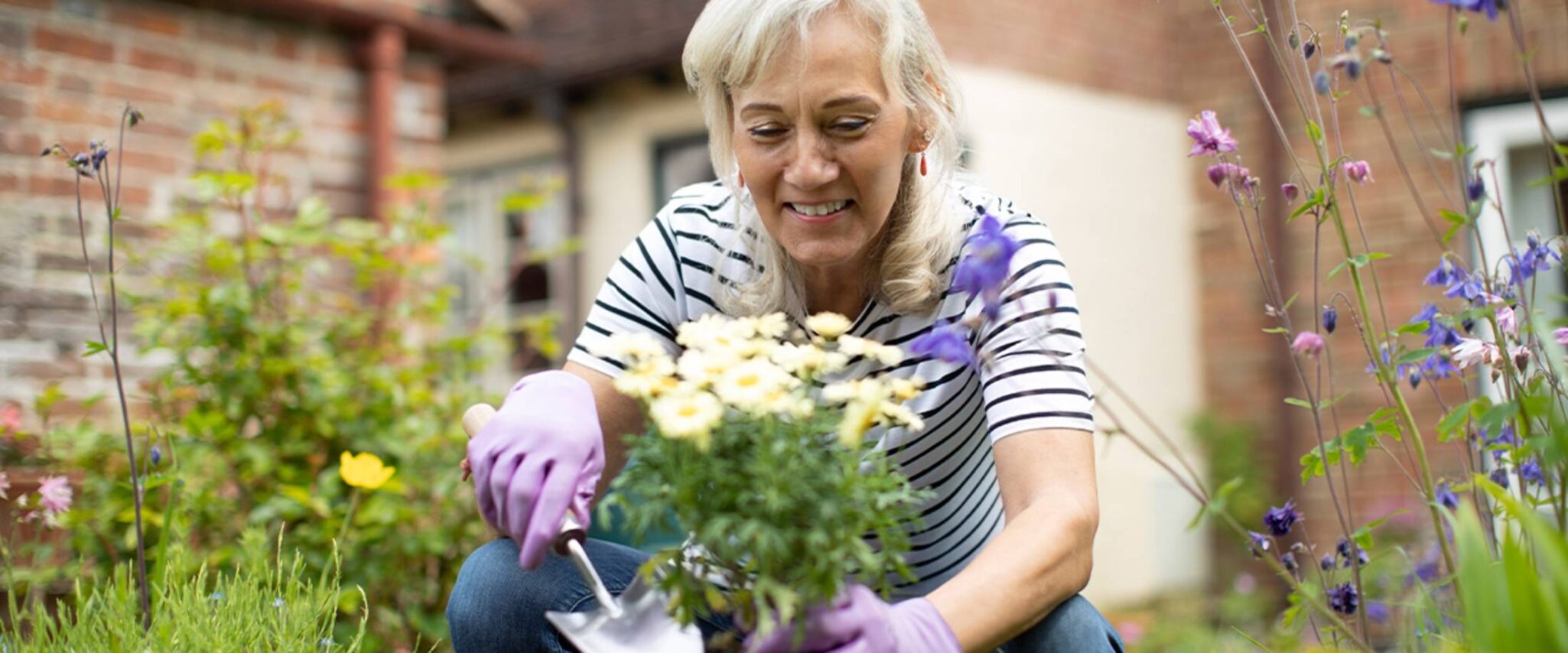Gardening Tips & Tools for Seniors with Arthritis

Gardening for many seniors is more than just a hobby. Weeding, digging, planting and watching the fruits of their labor blossom makes them happy like no other activity on earth. As an added bonus, gardening is good exercise. But if your joints hurt because of arthritis, the prospect of pulling weeds or kneeling to prune your roses can make you think twice about getting out in the garden.
Gardening is good for arthritis.
Don’t let arthritis stop you. Gardening for seniors is a great way to stay active. Gardening helps you maintain your range of motion, bone density, strength and quality of life. Getting outdoors in the fresh air can improve your mood and clear your mind. If gardening is one of your favorite activities, you can still reap the benefits gardening for seniors provides by adjusting your methods and using the right tools.
Tame the pain with these gardening tips.
These smart strategies can lessen the pain of arthritis and help make gardening a pleasure.
1. Warm up. Do some gentle stretching to warm up muscles and lubricate your joints. Stretching helps protect the joints while you’re working. Stretch the muscles you use when gardening, especially the legs, back and shoulders.
2. Take breaks. Arthritis pain can build up if you don’t rest your joints now and then. Take a break and smell the roses. You should also vary your gardening activities to minimize repetitive stress on your back, joints and muscles.
3. Raise your bed. If it’s difficult to bend down to ground level, bring the garden closer to you. Try a raised garden bed, flower box or trellis garden. For a more portable solution, grow plants in containers. You can put them on shelves or hang them on a wall for easier access.
4. Go low-maintenance. Choose plants that require less watering and attention. Perennials and wildflowers are good options. Pole beans can be grown on trellises. And herbs can be grown in containers. Also, don’t forget to mulch to reduce weeding and watering.
5. Don’t carry the water. Handheld watering cans can strain joints. And lugging garden hoses around your yard is a pain in the neck. Instead, lay soaker hoses throughout your garden or set sprinklers on timers. Better yet, invest in a sprinkler system.
Joint-friendly tools for a green thumbs-up.
Put these helpful gardening tools for seniors in your toolkit and watch your garden grow.
6. Gloves. A sturdy pair of gloves will give you a better grip so you can relax your hand a little. They’ll also protect your hands from blisters, cuts and scrapes.
7. Knee pad. If you have to kneel on the ground, cushion your knees with a thick kneeling pad. Some kneeling pads have side rails you can use to brace yourself with one arm or that aid you in standing back up.
8. 2-Wheel Wheelbarrow. Two wheels are better than one. They take the weight off your arms and put it on the axle instead. Plastic wheelbarrows are light, easy to maneuver and won’t rust.
9. Gardening stool. A folding or wheeled gardening stool can save your back and help you move around the garden more easily, especially if you have raised beds.
10. Ergonomic gardening tools. Garden tools with bigger handles or soft foam grips are specially designed for arthritic hands and wrists. You can also adapt existing tools by wrapping pipe insulation around the handles to make them thicker. Long-handled tools can help you work standing up or sitting without having to reach or bend over. If you’re shopping for new garden tools, look for those with the Ease-of-Use Commendation from the Arthritis Foundation.
11. Power tools. Electric hedge trimmers can save you time and spare you pain. Electric mowers are also lighter and easier to maneuver than gas mowers, and they’re friendlier to the environment.
12. Splints. A brace or splint can reduce strain on joints and help you work longer in the garden. Some hand tools have forearm braces that let your arms do more of the work, reducing stress on the wrists.
Grow with us at The Village at Gleannloch Farms.
Gardeners can tend their own garden plots at The Village. It’s just one of many life-enriching activities residents enjoy. To learn more about a lifestyle designed to help you thrive, visit our Independent Living page.




